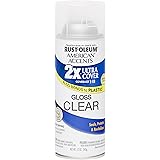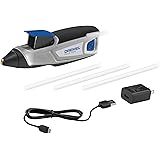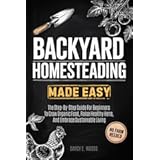Elevate Your Space: Crafting High-End Dollar Tree DIY Mirror Wall Art
Transforming inexpensive items into sophisticated home decor is an art form, and the creative project presented in the accompanying video perfectly exemplifies this principle. It demonstrates how readily available materials from a Dollar Tree store can be meticulously assembled to produce an impressive piece of mirror wall art, rivaling the aesthetics of more expensive decor. This guide aims to provide a comprehensive, detailed understanding of the process, expanding upon the techniques showcased in the video to assist in the creation of your own budget-friendly masterpiece.
The Vision: Replicating Luxury on a Budget
The inspiration for this remarkable Dollar Tree DIY project originated from an observation of a high-end interior, specifically a wall display within a multi-millionaire’s residence. The appeal of such elaborate mirror arrangements is undeniable, yet the cost often prohibits accessibility for the average homeowner. Consequently, the challenge was embraced: to replicate this luxurious aesthetic utilizing an arsenal of affordable resources. This approach not only facilitates significant cost savings but also offers the immense satisfaction of creating a unique item with one’s own hands, establishing a distinct personal touch in any living space. Imagine if every piece of decor could be achieved with such ingenuity and minimal expenditure; the possibilities for personalized home styling would be limitless.
Essential Materials for Your Dollar Tree DIY Masterpiece
A successful Dollar Tree DIY home decor project begins with the careful selection of materials. For this specific mirror wall art, the primary components are intentionally accessible and budget-friendly. Five decorative chargers form the structural base of the piece, providing a consistent circular motif. Three small mirrors, which were chosen for their charming appearance and potential for reflective interest, are integrated into the design; notably, one mirror possessed a slightly darker tint, which was embraced as a unique characteristic that would contribute to the overall visual texture. Furthermore, colored craft sticks are employed for initial stability, while essential tools include wire, wire cutters, and a reliable adhesive system. For optimal, long-lasting adhesion, a combination of hot glue for quick tack and E6000 adhesive for a permanent bond is highly recommended, though hot glue may be used for initial assembly due to its rapid curing time.
Assembling the Foundation: Chargers and Craft Sticks
The initial stage of construction involves the careful alignment and attachment of the decorative chargers. Two chargers are first positioned side-by-side, their edges closely touching. Subsequently, craft sticks are strategically placed across the seams where the chargers meet, functioning as bridging elements to provide immediate structural integrity. These sticks are typically cut to an appropriate length and then affixed with hot glue, serving as temporary fasteners. It is imperative that the sticks do not extend beyond the edge of the chargers if a seamless look is desired from the front. This step is repeated for additional chargers, forming a cohesive base unit. For enhanced durability, particularly if the mirror wall art is destined for a prominent or high-traffic area, the hot glue is later supplemented or replaced with a stronger adhesive such as E6000, ensuring a robust and lasting connection. During the video, an initial error with glue not holding was resolved by using a silicone mat to apply pressure, emphasizing the importance of a flat, stable surface during the curing process.
Engineering a Hanging Mechanism: The Wire Solution
The successful display of any wall art necessitates a secure and discreet hanging mechanism. In this budget DIY project, a custom wire hanger is ingeniously fabricated. A suitable length of crafting wire, ideally in a color that complements the overall piece (such as black to match the chargers), is retrieved and cut using wire cutters. This wire is then shaped into two distinct loops, one on each end, through a process of careful bending and twisting, often using a finger as a mandrel. These loops are designed to hook over a wall fixture. The central portion of the wire is kept relatively straight, and the ends are subsequently attached to the backside of the assembled chargers. A generous application of hot glue is utilized to firmly secure the wire ends, ensuring that they do not protrude above the top edge of the chargers, which would compromise the aesthetic. The placement is critical for balance; therefore, careful measurement and alignment are essential to ensure the finished piece hangs evenly and securely.
Integrating the Mirrors: Adding Reflective Elegance
With the structural foundation and hanging mechanism in place, attention is turned to the integration of the mirrors, which serve as the focal points of this decorative piece. The three chosen mirrors are carefully positioned onto the assembled charger base. Their arrangement is paramount to achieving the desired visual impact, often involving a degree of overlapping to create depth and interest. For instance, two mirrors might be placed directly on the upper and lower connections of the chargers, while a third is centrally positioned, perhaps slightly overlapping the others. As with the chargers, adhesive choice is crucial; while hot glue provides instant adhesion for placement, a more permanent bond with E6000 is advised for the mirrors, particularly given their reflective nature and the desire for long-term stability. Each mirror is gently pressed into place, allowing sufficient time for the adhesive to cure. The subtle variation in mirror tint, as noted in the video, can be strategically utilized to add a unique dimension to the finished DIY mirror wall art, breaking uniformity and enhancing visual appeal.
Advanced Tips for Your Dollar Tree Decor Project
To further enhance your Dollar Tree DIY home decor endeavors, several considerations can be taken. Regarding adhesives, while hot glue offers convenience for rapid assembly, its long-term holding power, particularly for heavier items or in fluctuating temperatures, is often surpassed by stronger, more flexible alternatives like E6000 or Liquid Nails. Therefore, for enduring creations, it is recommended that hot glue be used for initial placement, followed by a more robust adhesive for permanent bonding. Furthermore, customization opportunities are abundant; the chargers can be painted in any desired color or textured finish to match existing decor, and various embellishments, such as beads, faux flowers, or decorative trim, can be incorporated. Different mirror shapes (e.g., square, oval) can be explored for varied visual effects. When considering placement, scale is important; a larger wall might accommodate multiple such pieces or a grander arrangement, whereas a smaller space benefits from a single, thoughtfully placed item. Regular dusting with a soft cloth will maintain the pristine appearance of your finished decorative piece.







